| [1] Acta Med Croatica.Assessment of nutritional status in patients with chronic kidney disease on maintance hemodialysis. Acta Med Croatica. 2014;68(2): 97-102.[2] Sumida K,Yamagata K,Iseki K,et al.Different impact of hemodialysis vintage on causespecific mortality in longterm hemodialysis patients. Nephml Dial Transplant. 2016;31(2):298.[3] Hajian-Tilaki A,Oliae F,Jenabian N,et al.Oral health-related quality of life and periodontal and dental health status in Iranian hemodialysis patients.J Contemp Dent Pract. 2014;15(4):482-490.[4] Webster AC,Nagler EV,Morton RL,et al.Chronic Kidney Disease. Lancet. 2017;389(10075):1238-1252.[5] Deschamps-Lenhardt S,Martin-Cabezas R,Hannedouche T, et al.Association between periodontitis and chronic kidney disease: systematic review and meta-analysis.Oral Dis. 2018.doi: 10.1111/odi.12834. [Epub ahead of print][6] Bundy JD,Chen J,Yang W,et al.Risk factors for progression of coronary artery calcification in patients with chronic kidney disease: The CRIC study.Atherosclerosis.2018;271:53-60.[7] Chen LP,Chiang CK,Peng YS,et al.Relationship between periodontal disease and mortality in patients treated with maintenance hemodialysis. Am J Kidney Dis. 2011;57(2):276-282.[8] Eke PI,Page RC,Wei L,et al.Update of the case definitions for population based surveillance of periodontitis.J Periodontol. 2012; 83(12):1449-1454.[9] Steiber AL,Kalantar Zadeh K,Secker D,et al.Subjective Global Assessment in chronic kidney disease:a review.J Ren Nutr. 2004;14(4): 191-200.[10] Chan M,Kelly J,Batterham M,et al.Malnutrition(subjective global assessment)scores and sel31m albumin levels,but not body mass index values,at initiation of dialysis are independent predictots of mortality:a 10 year clinical cohort study.J Ren Nutr.2012;22(6): 547-557. [11] 郑智华,马祖等,张涤华,等.血液透析患者营养状态与生存质量关系研究[J].中国血液净化.2005,4(4):187-190.[12] Allen KL,Miskulin D,Yan G,et al.Association of nutritional markers with physical and mental health status in prevalent hemodialysis patients from the HEMO study.J Ren Nutr. 2002;12(3):160-169.[13] Kshirsagar AV,Moss KL,Elter JR,et al.Periodontal disease is associated with renal insufficiency in the Atherosclerosis Risk In Communities (ARIC) study.Am J Kidney Dis. 2005;45(4):650-657.[14] Leypoldt JK.Solute fluxes in different treatment modalities. Nephrol Dil Transplant.2000;15(11):3-9.[15] Cheung AK,Levin NW,Greene T,et al.Effects of high-flux hemodialysis on clinical outcomes: results of the HEMO study. J Am Soc Nephrol. 2003;14(12):3251-3263.[16] 徐丰博,刘惠兰,左力,等.高通量血液透析对患者营养状况的临床观察[J].中国血液净化,2010,12(7):662-664.[17] Szeto CC,Chow KM,Leung CB,et al.Assessment of protein nitrogen appearance in Chinese peritoneal dialysis patients which method to use.Ren Fail.2003;25:235-246.[18] Cheung AK,Greene T.Effect of membrane permeability on survival of hemodialysis patients.J Am Soc Nephrol. 2009;20(3):462-464.[19] Stenvinkel P,Barany P,Heimburger O,et al.Mortality,malnutrition and atherosclerosis in ESRD: What is the role of interleukin-67.Kidney Int Suuppl.2002;61:103-108.[20] He L,Fu M,Chen X,et al.Effect of dialysis dose and membrane flux on hemoglobin cycling in hemodialysis patients.Hemodial Int.2015; 19(2): 263-269.[21] Yin P,Song Y,Li J.Soluble transferrin receptor as a marker of erythropoiesis in patients undergoing high-flux hemodialysis. Bosn J Basic Med Sci.2017;17(4):333-338. [22] Nylund KM,Ruokonen H,Sorsa T,et al.Association of the Salivary Triggering Receptor Expressed on Myeloid Cells/ its Ligand Peptidoglycan Recognition Protein 1 Axis With Oral Inflammation in Kidney Disease.J Periodontol.2017:1-17.[23] 王福诩,吴芳.高通量血液透析临床应用研究新进展[J].临床肾脏病杂志, 2017,17(10):634-638.[24] 张云明.牙周病患者治疗前后血清hs-CRP、TNF-α和M-CSF检测的临床意义[J].放射免疫学杂志,2008,20(6):531-533.[25] Ahn YB,Shin MS,Byun JS,et al.The association of hypertension with periodontitis is highlighted in female adults: results from the Fourth Korea National Health and Nutrition Examination Survey.J Clin Periodontol. 2015;42(11):998-1005.[26] Rodrigues VP,Libério SA,Lopes FF,et al.Periodontal status and serum biomarkers levels in hemodialysis patients.J Clin Periodontol.2014; 41(9):862-868.[27] Flores MF,Montenegro MM,Furtado MV,et al.Periodontal status affects C-reactive protein and lipids in patients with stable heart disease from a tertiary care cardiovascular clinic.J Periodontol.2014;85(4):545-453.[28] Prinsen BH,Rabelink TJ,Beutler JJ,et al.Increased albumin and fibrinogen synthesis rate in patients with chronic renal failure.Kidney Int.2003;64(4):1495-1504.[29] Yoneda T,Tomofuji T,Kunitomo M,et al.Preventive Effects of Drinking Hydrogen-Rich Water on Gingival Oxidative Stress and Alveolar Bone Resorption in Rats Fed a High-Fat Diet.Nutrients.2017; 9(1).pii: E64. doi: 10.3390/nu9010064.[30] Azak A,Huddam B,Öneç K,et al.Contribution of high flux membranes to the therapy of uremia-associated dyslipidemia.Ther Apher Dial.2012; 16(6):595-599.[31] Wanchai K,Pongchaidecha A,Chatsudthipong V,et al.Role of Gastrointestinal Microbiota on Kidney Injury and the Obese Condition. Am J Med Sci.2017;353(1):59-69. [32] Franks PW,Atabaki-Pasdar N.Causal inference in obesity research.J Intern Med.2017;281(3): 222-232. [33] Kuraji R,Fujita M,Ito H,et al.Effects of experimental periodontitis on the metabolic system in rats with diet-induced obesity (DIO): an analysis of serum biochemical parameters.Odontology.2018;106(2):162-170.[34] Schaible UE,Kaufmann SH.Malnutrition and infection: complex mechanisms and global impacts.PLoS Med. 2007;4(5):e115.[35] Haag-Weber M,Dumann H,Horl WH.Effect of malnutrition and uremia on impaired cellular host defense.Miner Electrolyte Metab.1992;18: 174-185. [36] Scrimshaw NS,SanGiovanni JP.Synergism of nutrition, infection, and immunity: an overview.Am J Clin Nutr. 1997;66(2):464S-477S.[37] Chen LP,Chiang CK,Peng YS,et al.Relationship between periodontal disease and mortality in patients treated with maintenance hemodialysis. Am J Kidney Dis. 2011;57(2):276-282.[38] 刘涛,李根,卢锦莲,等.牙周非手术治疗对维持性血液透析伴牙周炎患者牙周状况及血清超敏C反应蛋白的影响[J].中国血液净化, 2016,15(7): 336-340.[39] Grubbs V,Garcia F,Jue BL,et al.The Kidney and Periodontal Disease (KAPD) study: A pilot randomized controlled trial testing the effect of non-surgical periodontal therapy on chronic kidney disease.Contemp Clin Trials. 2017;53:143-150. [40] Ruospo M,Palmer SC,Wong G,et al.Periodontitis and early mortality among adults treated with hemodialysis: a multinational propensity-matched cohort study.BMC Nephrol. 2017;18(1):166.[41] Sharma P,Cockwell P,Dietrich T,et al.Influence of Successful Periodontal Intervention in REnal Disease (INSPIRED): study protocol for a randomised controlled pilot clinical trial. Trials. 2017;18(1):535.[42] 王欣.慢性肾衰竭尿毒症期患者牙周病的危险因素分析[D].吉林大学, 2016. [43] Sharma P,Dietrich T,Ferro CJ,et al.Association between periodontitis and mortality in stages 3-5 chronic kidney disease: NHANES III and linked mortality study.J Clin Periodontol. 2016;43(2):104-113. [44] Huang ST,Lin CL,Yu TM,et al.Intensive Periodontal Treatment Reduces Risk of Infection Related Hospitalization in Hemodialysis Population:A Nationwide Population—Based Cohort Study.Medicine(Baltimore).2015;94(34):e1436.[45] Chang JF,Yeh JC,Chiu YL,et al.Periodontal Pocket Depth, Hyperglycemia, and Progression of Chronic Kidney Disease: A Population-Based Longitudinal Study.Am J Med. 2017;130(1): 61-69.e1. [46] Dioguardi M,Caloro GA,Troiano G,et al.Oral manifestations in chronic uremia patients.Ren Fail.2016;38(1):1-6.[47] Leto E,Bilal F,Osmic I.Efficiency of high-flow dialyzers in removal of beta-2 microglobulin.Med Arh.2001;55(4):225-226. |
.jpg)
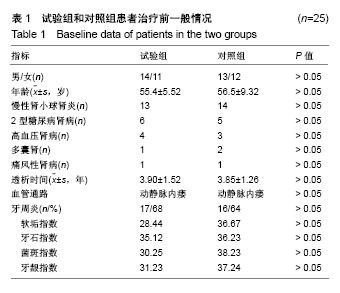
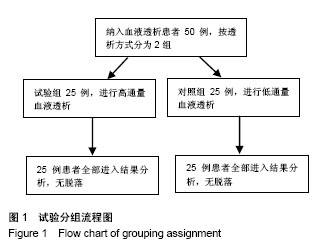
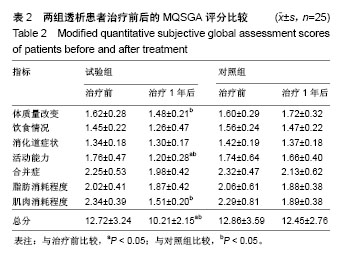
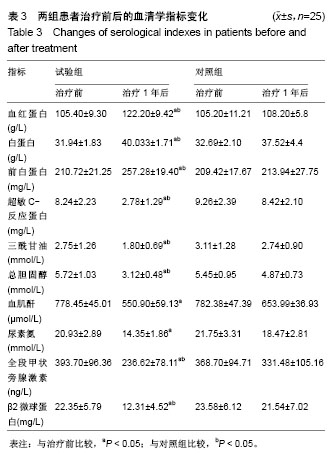
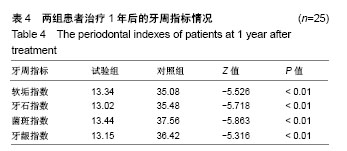
.jpg)